
|

|
|
Home Site Search Contact Us Subscribe
|
|
Best Architecture & Design Books of 2017: The Underside Keeps Turning This year's best reading subverts shopworn stylistic and historic categories. By Norman Weinstein December 21, 2017 WORKac: We’ll Get There When We Cross That Bridge by Amale Andraos and Dan Wood (The Monacelli Press). Giddily irreverent, Andraos and Wood have compressed 15 years of their colorful (in every sense) practice into a sprawling hodge-podge of a book collecting dizzying theories, witty anecdotes, and oddball epiphanies. Their architecture embodies Pop culture’s attraction to oversized playful audacious gestures. A design for a West African diplomatic conference center resembles a monumental Claes Oldenburg squash with three sections scooped out, then filled with equal portions of savannas, jungles, and mountains. Post-Post-Modern? What do you call their edible schoolyard? Disneyland Modernism? Fun for all ages – and serious enough to work in this age.
Wang Shu: Amateur Architecture Studio. Edited by Michael Juul Holm, Kjeld Kjeldsen, Mette Kallehauge; photographs by Iwan Baan. With contributions by Kenneth Frampton, Wang Shu, Yiping Dong, et al. (Louisiana Museum of Modern Art/Lars Müller Publishers). Wang Shu calls himself an amateur, but he is a pro when it comes to dissolving the boundaries between ancient and contemporary Chinese architecture. This sensitively written and illustrated monograph (another Frampton triumph in part) effectively conveys Wang Shu’s upcycling of traditional building materials (think countless colored ceramic tiles of all vintage forming the façade of the Jinhua Ceramic Pavilion) and regeneration of traditional building processes. Each project offers itself as a detailed lesson in living Chinese architectural history relevant to any place where an uncritical fetish for the shockingly novel prospers and shouldn’t.
Le Corbusier: The Complete Buildings by Cemal Emden (Prestel). The title lets you know what you’re getting: showy photographs of Corbu’s 52 buildings still standing. You get that – but with value added because this Turkish photographer-architect photographer doesn’t simply illuminate the Master’s “greatest hits.” Instead of an expected play of intense light crisscrossing masses, he frames many buildings in a dusky atmosphere, letting the indignities of aged concrete and wood have their say. These are moody photos that Corbu might have despised. But his buildings shine with tragic persistence and age-defying grandeur even given the photographer’s taste for stormy weather. Sundry extraneous comments by architects and scholars complete the package.
50 Architects You Should Know by Isabel Kuhn, Kristina Lowis, and Sabine Thiel-Siling (Prestel). Know a teen who is curious about architecture but doesn’t know where to begin reading about it? This will do splendidly. Just enough facts and illustrations to transcend the superficiality the book’s title seems to broadcast. And a little surprise: starts with Brunelleschi and ends with – Herzog & de Meuron. Of course you get the expected photo of the Beijing “Bird’s Nest” Olympic stadium attached to a crisp overview – but nice to receive a little jolt when the image of their Elbphilharmonica pops up and dazzles.
The Complete Zaha Hadid: Expanded and Updated. Introduction by Aaron Betsky. (Thames & Hudson). This may be the last will and testament of the magnificent First Lady of 21st-century architecture – but there may be enough projects left in the vault of her London office for future editions of The Complete Zaha Hadid until 2117 (Thames & Hudson already did three previous ones). Plus, if she is immortal, she may need to come back and strangle the unnamed book designer responsible for the too-small format, too-light font, and too-crowded layout. That said, what an overwhelming legacy to the very end. Even if you have an earlier edition of this monograph, the inclusion of the Dominion Office Building in Moscow (poised for takeoff) justifies the purchase, as does Betsky’s superbly informative and enthusiastic introduction.
LOT-EK: Objects + Operations by Ada Tolla, Giuseppe Lignano, and Thomas de Monchaux (The Monacelli Press). Another dynamic male-female duo is at the heart of this practice – but Tolla and Lignano get their juices going when upcycling infrastructure in its steely glory rather than dreaming edible playgrounds. Best known for their myriad buildings carved from shipping containers, this long-overdue showcase reveals them as considerably more versatile and eclectic than their shipping-container reputation would indicate. They describe themselves as designers of “tough beauty.” Think of an architectural version of The Clash. Refined grit and spit. With a sense of humor that maybe does, after all, link them to WORKac’s power duo.
Found in Translation: Design in California and Mexico 1915-1985. Wendy Kaplan, Editor (Prestel). Here’s what you can do with this book. Imagine that it possesses a magic power (it does!). When the President and his xenophobic congressional pals try to erect a border wall between this once great nation and Mexico, this book has the power to dissolve concrete (even at a distance!). A catalogue of a most timely exhibition at the Los Angeles County Museum of Art – where the designers embodying the Colonial and Vernacular meet, greet, and merge in a triumph of tropical post-colonial imagination and American construction grit at the everlastingly porous border.
The Drama of Space: Spatial Sequences and Compositions in Architecture by Holger Kleine (Birkhauser). This finely-detailed study of how architecture conveys drama through, say, transitions in the forms and patterning of floors, walls, and ceilings is not light reading. But it is essential and eye-opening in terms of illuminating how architects and clients alike experience moving through architecture as a “spine-tingling” passage. If you’ve ever marveled at how adroitly Alfred Hitchcock captures a sense of dramatically gripping foreboding through architecturally engaging sets, this book is for you.
Bauhaus: Workshops for Modernity 1919-1933 by Barry Bergdoll and Leah Dickerman (D.A.P./The Museum of Modern Art). This returns to print an indispensably reliable and comprehensive Bauhaus overview with richly balanced scholarship from 22 experts. And hundreds of invaluable illustrations. Not a book for Bauhaus novices – dive into the entertaining Taschen edition of Magdalena Droste’s Bauhaus for that – but a book for devout designers who crave the big picture of a persistent wellspring of controversial ideas still passionately argued over.
Destination Architecture: The Essential Guide to 1000 Contemporary Buildings (Phaidon). This is additional evidence that Phaidon can pack a preposterous number of architectural masterpieces between two covers. The back cover gives the numbers: 1,000 buildings, 650 architects, 70 countries, and 135 cities. A different scope than 50 Architects You Should Know and intended for a different/older readership. Too bad the cover omits the names of the complete writing and design teams. All entries are linked by the theme that these are architecturally worthy travel destinations for the contemporary-minded. This serves as a Baedeker if you have unstoppable wanderlust and the disposable income of Warren Buffet. The travel guide theme allows for a nearly-pocket-sized version of what might have become a hernia-inducing blockbuster, making this an enjoyable if dizzying worldwide tour for the architecturally little traveled.
Norman Weinstein is the author of “Words That Build” – an exclusive 21-part ArchNewsNow.com series about writing as a keystone of a successful architectural practice. He's authored several books of poetry and books about music and literature. Weinstein is currently learning weaving in order to deepen his understanding of architecture, music, and poetry. He can be reached at nweinstein25@gmail.com.
More by Weinstein:
An exclusive 21-part series that focuses on the overlooked foundations of architecture: oral and written communication.
Weinstein: From Ada to Zaha and Everything In Between Op-eds, book reviews, musings, and debate. |
(click on pictures to enlarge) 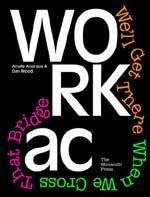 The Monacelli Press "WORKac: We’ll Get There When We Cross That Bridge" by Amale Andraos and Dan Wood  Louisiana Museum of Modern Art/Lars Müller Publishers "Wang Shu: Amateur Architecture Studio" edited by Michael Juul Holm, Kjeld Kjeldsen, and Mette Kallehauge 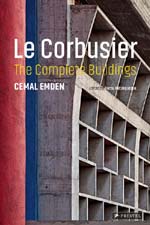 Prestel "Le Corbusier: The Complete Buildings" by Cemal Emden  Prestel "50 Architects You Should Know" by Isabel Kuhn, Kristina Lowis, and Sabine Thiel-Siling 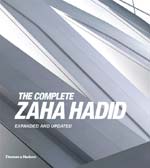 Thames & Hudson "The Complete Zaha Hadid: Expanded and Updated" with introduction by Aaron Betsky 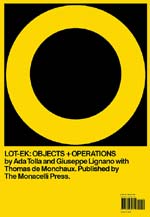 The Monacelli Press "LOT-EK: Objects + Operations" by Ada Tolla, Giuseppe Lignano, and Thomas de Monchaux  Prestel "Found in Translation: Design in California and Mexico 1915-1985" edited by Wendy Kaplan 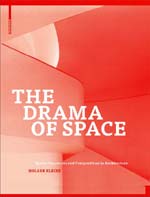 Birkhauser "The Drama of Space: Spatial Sequences and Compositions in Architecture" by Holger Kleine 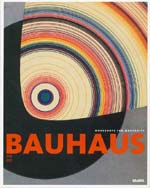 D.A.P./The Museum of Modern Art "Bauhaus: Workshops for Modernity 1919-1933" by Barry Bergdoll and Leah Dickerman 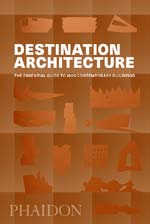 Phaidon "Destination Architecture: The Essential Guide to 1000 Contemporary Buildings" by Phaidon Editors |
© 2017 ArchNewsNow.com